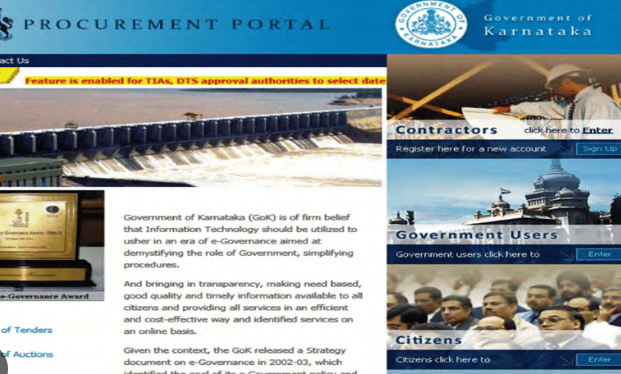The funnel or conversion funnel or purchase funnel refers to the strategic journey made by an Internet user from his arrival on a website to the transformation, whether it is a sale, a request for a quote or registration. Thus, the metaphor of the tunnel images the idea that visitors are escorted from point A to point B, approaching the goal more precisely step by step, and as simply as possible.
The stages of the conversion funnel
A conversion funnel consists of four key steps. This is often described using the AIDA model for Attention, Interest, Desire and Action.
-
Capture attention
This first step of the AIDA model consists of finding a way to hold the attention of visitors, and this, from the first seconds of their session. Except that in an increasingly competitive context, capturing the attention of visitors while standing out becomes a real challenge, as they have never been as much in demand as today, on the Internet.
You therefore have between 5 and 10 seconds maximum to convince a user to stay on your site. Whatever the medium, you should take care of both the form and the content of your message to attract the attention of your prospects by:
- Taking care of its catchphrase with a striking title or a particular font,
- Using an interrogative form,
- Highlighting a surprising number (statistics, turnover, number of customers, etc.),
- Choosing a strong image of meaning, visual animations and bright colors,
- Communicating about a novelty or a promotional offer,
- Engaging your prospect by personalizing your exchanges (name, sector of activity, etc.).
-
Generate interest
Your user is now aware of his need: you have to arouse a particular interest in the product or service you want to sell him, or encourage him to perform the action you expect from him.
This is the time to convince him of its usefulness by establishing a link between the message delivered and the need, the motivation to which your product or service will respond. It is necessary to know your target well in order to successfully engage it through a simple and clear message. This notably involves the use of personas and storytelling to understand their expectations and thus identify the best levers for action.
-
Induce desire
This is the time to put your capacity for empathy to good use to arouse emotions in your prospect.
To do this, you can promote the product or service or the experience that your prospect will get from it. It is thus a question of highlighting the benefits of the action from the customer’s point of view. You can, for example, list the benefits your prospect will enjoy after the purchase.
The search for rarity, differentiation, self-esteem, the feeling of belonging to a community are also actionable levers to trigger an action.
-
Trigger an action
After accompanying your prospect throughout the conversion process, the final objective is to make your user take some action to act to purchase.
The use of a CTA (or call to action) facilitates the alteration of desire into concrete action while highlighting the rarity of a product (liquidation of a stock), the urgency of buying it (last-minute offer) or even its exceptional character (its low price, a gift or a discount in exchange for the purchase).
Optimize your conversion funnel
The sales and conversion tunnel are a mandatory step in e-commerce. Yet this is one of the weak points of most sites. From the home page to payment validation, via category pages, product sheets, adding to cart or choosing delivery, the conversion funnel plays a fundamental role in the user experience. Poorly optimized, this process can be the cause of many cart abandonments, also having an effect on your conversion rate.
Identify friction points
A first step to consider would be to examine the current funnel step by step with the goal of shedding light on where you are losing visitors. The goal is to be alert to sudden drop points or moments of customer confusion or frustration.
A good practice is to identify potential sticking points that may be revealed by customer feedback or support requests. This can provide some avenues for improvement to deploy before starting to work methodically through each step of the tunnel.
Multiply the points of contact
Some studies would show that a prospect requires on average 5 to 7 points of contact with a company before making a purchase. Do not hesitate to multiply and cross your acquisition channels:
- By SEO(Search Engine Optimization) in order to be visible in search results,
- Through SMO(Social Media Optimization) to target audiences and demographic groups,
- Through inbound marketing to establish your brand and attract people to browse your site based on their interests (blogs, opinion pieces, social media posts) …
Optimize the user experience of your site
In order to avoid the loss of potential customers at each stage of the funnel, several actions can be deployed.
Simplify access to information
Your visitors should be able to find what they are looking for intuitively while being guided through the buying process. It is therefore necessary to classify the information submitted to your visitors in order of importance: focus on the essential information at the start of navigation and let the most curious visitors dig into the additional information in more depth.
Social proof and reassurance elements
Reassure your visitors about the seriousness of your site and reinforce their idea of buying by highlighting customer testimonials and ratings through a third-party service for a guarantee of impartiality, but also your years of experience., your guarantees, your labels and/or certifications.
Offer visible help
In the same idea of reassurance, many visitors prefer to ask a few questions before making a purchase. This implies that many of them would not finalize their purchase, because they could not access help when they needed it.
Implementing a frequently asked questions, service or online support feature can increase conversion while reassuring your visitors.
Use content to showcase the features and benefits of a product or service
Using videos, images, infographics, blog posts, and editorials is the best way to showcase your products and help consumers understand them better. From an SEO perspective, it will also help you build your EAT (Expertise, Authoritativeness, Trustworthiness).
Pamper your customers to retain them
Your customers’ journey to purchase has allowed you to develop a connection and they are fully aware of what you can offer them. At this stage, the objective is to avoid any last-minute abandonment. It’s time to pull out all the stops to stand out!
There may be promotions and perks like percentage discounts, free shipping that can help tip the balance in your favor. In this sense, when a purchase helps the customer get closer to a reward, he is more likely to come back to you, rather than turn to a competitor. Just as a loyalty or sponsorship program allowing the gain of discounts encourages the consumer to share his experience via your product or service.
Finally, in the case of a basket abandonment of a prospect whose contact details you have, it is wise to follow up by email in order to remind him that he left your site without having completed his purchase. This is also the time to set up a retargeting campaign to offer ads to people who have already visited a website, to remind them to come back and change their minds by placing an order.
If so, many measures are possible to put in place by an e-commerce site, how to ensure their effectiveness once implemented?
Measure the performance of your conversion funnel
First, setting up A/B tests could help you assess the impact and performance of the optimizations deployed at each stage of your conversion funnel, by comparing the two versions of it.
Then measure the success of your funnel by getting feedback based on your site’s user experience. This can help you understand your customers’ path to purchase, but also why they engage them and thus know how to encourage them.





